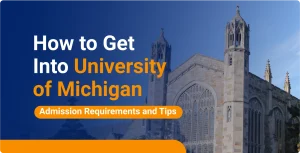If you’re prepping for the SAT, you might wonder what the highest score you can get is. The simple answer? A perfect 1600. But getting there takes strategy, preparation, and understanding how the SAT scoring system works. The test is designed to challenge you, but reaching a top score is possible with the right approach.
In this guide, we’ve got you covered. You’ll learn exactly how SAT scoring works, what it takes to rank in the top percentile, and whether your score gives you an edge for Ivy League admissions. We’ll also break down key strategies for each test section so you can maximize your score.
- How the SAT Scoring System Works
- What Is a Good SAT Score for Ivy League Schools?
- How to Get a Perfect SAT Score
- Frequently Asked Questions
- Takeaways
How the SAT Scoring System Works
The SAT is made up of two main sections, each with its score range:
| Section | Score Range |
| Reading and Writing | 200–800 |
| Math | 200–800 |
Your total SAT score is just these two added together, and the highest possible score is 1600. Your score also comes with a percentile ranking, which shows how you compare to other students. Think of it like a game leaderboard.
Let’s say you got a 1400 on the SAT, congrats—you’re in the 97th percentile, meaning you did better than 97% of test-takers. That’s already a killer score and puts you in a solid position for a lot of great schools.
But if you hit a 1530, you’re in the 99th+ percentile, meaning you’re basically in the top 1% of everyone who took the test. That’s Ivy League and top-tier school territory.
Percentiles just show where you stand compared to everyone else, so even though the raw difference between 1400 and 1530 is 130 points, in terms of rankings, it’s a pretty big jump. Both scores are impressive, but if you’re aiming for the most competitive schools, that extra boost can make a difference.
How is the SAT score calculated?
The SAT has changed a lot! It’s now fully digital and adaptive, meaning it’s shorter: just 2 hours and 14 minutes, instead of the previous 3-hour paper test. But it still tests the same skills. Here’s how scoring works:
- Each section (Reading & Writing and Math) is split into two modules.
- Everyone starts with a mix of easy, medium, and hard questions in Module 1.
- Based on how you do in the first module, the second module adjusts giving you harder or easier questions.
- Your final section score is based on your performance across both modules, not just the number of correct answers.
Since the second module adapts to your performance, doing well in the first module gives you a better chance at a higher score.
What Is a Good SAT Score for Ivy League Schools?
You don’t need a perfect 1600 to get into the Ivy League, but you need a high score to stay competitive. Ivy League schools have some of the toughest admissions, and your SAT score plays a big role in your application.
To better understand what you’re up against, here’s a quick look at Ivy League schools‘ typical SAT score ranges. The table shows the 25th percentile (lower range), 50th percentile (middle range), and 75th percentile (upper range) scores for admitted students:
| Ivy League School | 25th Percentile SAT Composite | 50th Percentile SAT Composite | 75th Percentile SAT Composite |
| Harvard | 1500 | 1550 | 1580 |
| Yale | 1500 | 1540 | 1560 |
| Princeton | 1510 | 1540 | 1560 |
| Columbia | 1470 | 1495 | 1530 |
| UPenn | 1500 | 1540 | 1570 |
| Brown | 1500 | 1530 | 1560 |
| Cornell | 1470 | 1520 | 1550 |
| Dartmouth | 1440 | 1520 | 1560 |
If you’re aiming for the Ivy League, your best bet is to target the 75th percentile scores to maximize your chances. For example, Harvard’s 75th percentile SAT score is 1580, which puts you in a strong position. The higher your score, the better your chances of standing out in a highly competitive applicant pool!
But keep in mind: while a high SAT score helps, it’s not the only thing Ivy League schools look at. Your essays, extracurriculars, recommendations, and personal story all play a huge part in standing out. The goal is to aim high on your SAT while building a well-rounded application that shows who you are.
How to Get a Perfect SAT Score
Want to hit that perfect 1600? It’s not easy, but you can get as close as possible with the right strategy and dedication. Here’s how to maximize your score in each section of the SAT:
1. Master the SAT Reading & Writing section.
- Read actively. Don’t just skim. Engage with the passage. Ask yourself, “What’s the main point?” and underline key ideas. Think of it like a conversation: pay attention to what the author is trying to say.
- Know common question types. The test loves asking about main ideas, author’s tone, and evidence-based answers. Practice recognizing these patterns. The more you familiarize yourself with these, the faster you’ll spot the right answers.
- Use the process of elimination. If you’re stuck, rule out answers that are too extreme or don’t match the passage’s tone. When in doubt, go with the choice that sticks closest to the actual wording in the passage.
- Memorize key grammar rules. SAT Reading & Writing tests the same grammar topics over and over: subject-verb agreement, punctuation, and parallel structure. Learn them inside out. Once you get these rules down, you’ll start spotting mistakes like a pro.
The SAT Reading & Writing section tests your ability to understand key ideas and analyze text effectively. Let’s break it down with an example:
Excerpt:
“Many historians argue that the Industrial Revolution, which began in the late 18th century, marked a turning point in human history. It led to rapid urbanization, technological advancements, and significant social changes. However, some scholars emphasize the negative consequences, such as increased pollution and labor exploitation.”
Question:
What’s the main purpose of this passage?
- A) To explain why the Industrial Revolution was necessary for progress.
- B) To describe both the positive and negative effects of the Industrial Revolution.
- C) To argue that the negatives outweighed the positives.
- D) To provide a timeline of events.
How to find the right answer:
- Identify the main idea. The passage presents both positives and negatives of the Industrial Revolution.
- Eliminate wrong answers. A is incorrect—the passage doesn’t say the revolution was necessary. C is incorrect—it doesn’t argue one side is stronger than the other. D is incorrect—there’s no timeline here.
- Confirm the best answer. B is correct—the passage neutrally presents both sides!
For SAT success, always look for balanced, evidence-based answers and avoid extreme wording!
2. Dominate the SAT Math section.
- Know your formulas. The SAT gives you some formulas, but not all. Memorize the ones for quadratic equations, exponent rules, and trigonometry. Having them locked in your brain saves time and helps you avoid last-minute guesswork.
- Understand problem-solving techniques. The test loves word problems. Break them down step by step and watch out for tricky wording. If a question seems confusing, rewrite it in your own words to make it easier to understand.
- Plug in numbers. If a question has variables, test different numbers to see what works. This can make solving equations easier. Plus, it’s a great way to double-check your answer without second-guessing yourself.
- Practice without a calculator. Half of the SAT Math section doesn’t allow a calculator. Get comfortable doing quick mental math and estimation. The faster you get at basic math, the more time you’ll have for tougher questions.
The SAT Math section is about problem-solving and logical thinking. Let’s go through a common question type and how to solve it efficiently:
Question:
A car rental company charges a $50 base fee plus $0.25 per mile driven. If Julia’s total bill was $95, how many miles did she drive?
- A) 150
B) 180
C) 200
D) 220
How to solve it:
- Set up an equation. Let x be the number of miles driven. The total cost formula is: 50 + 0.25x = 95.
- Isolate x. Subtract 50 from both sides: 0.25x = 45.
- Solve for x. Divide by 0.25: x = 45 ÷ 0.25 = 180.
- Check the answer. Plug 180 back in: 50 + (0.25 × 180 ) = 50 + 45 = 95.
Correct answer: B (180 miles).
When solving word problems, always write an equation based on the given information. It keeps things clear and avoids mistakes!
3. Train like it’s game day.
- Take full-length, timed practice tests. Simulate real test conditions without pausing or distractions. This builds endurance and confidence.
- Review your mistakes in depth. Don’t just move on after getting a question wrong. Determine why, and make sure you don’t repeat the same mistake.
- Use official SAT materials. The best practice comes from real SAT questions. Stick with College Board tests and trusted resources like Khan Academy.
4. Build a smart study plan.
- Start early and stay consistent. A perfect score doesn’t happen overnight. Spread your prep out over months, even if it’s just 30 minutes a day. Cramming at the last minute is stressful, but steady practice makes test day easier.
- Target your weak spots. Use practice tests to identify where you lose points, then drill those areas relentlessly. If algebra trips you up, make it your best friend, mastering your weaknesses is the fastest way to boost your score.
- Don’t neglect your strengths. Even if you’re great at math or reading, keep practicing so you don’t lose your edge. The SAT is all about consistency, so staying sharp in your strong areas keeps you ahead of the game.
5. Get help if you need it.
- Consider a tutor. A great SAT tutor can pinpoint your weaknesses and give you test-taking strategies tailored to you. If you’re struggling with certain question types or running out of time, a tutor can help you figure out exactly what to focus on.
- Join a study group. Studying with others keeps you accountable and helps you learn new strategies. Plus, explaining concepts to friends is one of the best ways to make sure you understand them.
- Use online resources wisely. Don’t waste time on low-quality prep materials. Stick to sources that mimic the real SAT as closely as possible, so you don’t end up practicing with questions that feel different from the actual test.
Frequently Asked Questions
1. Do you need a perfect 1600 to attend a top college?
Nope, you don’t! A perfect SAT score looks great, but Ivy League and other top schools don’t expect you to hit 1600. Most admitted students score in the 1500+ range, so that’s a solid target. But remember, colleges also care about your GPA, extracurriculars, essays, and recommendations. A killer application with a slightly lower SAT score can still get you in!
2. What sections are on the SAT?
The SAT has two main sections: Reading & Writing, and Math. You’ll get 64 minutes for Reading and Writing and 70 minutes for Math, making the test a total of 2 hours and 14 minutes. Each section is split into two equal-length modules, with a 10-minute break in between. The first module mixes easy, medium, and hard questions.
How you do on that first part determines if the second module will be more challenging or a bit easier. Most questions are multiple-choice, but some math questions require you to type in your answer. Knowing this structure can help you plan your time and feel more confident going in!
3. How many times should you take the SAT?
Most students take it 2-3 times, depending on their goals. You might not need a retake if your first score is solid and matches your dream schools’ averages. But if you know you can do better and have time to prep, go for it! Don’t overdo it, colleges usually focus on your highest score, and too many retakes won’t make a huge difference.
4. How much can you actually improve your SAT score?
A lot if you put in the work! Many students improve by 100-200 points by studying smarter, focusing on weak areas, and taking full-length practice tests. Even bigger jumps are possible if you grind, work with a tutor, or use great study resources. The key? A solid study plan and consistency!
5. Are SAT scores more important than GPA?
Your GPA usually matters more because it shows your performance over four years, while the SAT is just one test. That said, a strong SAT score can definitely help, especially if your GPA isn’t as high as you’d like. Some schools are even test-optional now, so while a good score helps, it’s not the only thing that counts.
Takeaways
- The highest SAT score you can get is 1600, but you don’t need a perfect score to get into top colleges. Just aim for a competitive one.
- If you’re aiming for an Ivy League school, targeting the 75th percentile score (around 1530–1580) will give you the best chance of standing out in the admissions process.
- If your score isn’t where you want it, retaking the SAT could help, especially if a small boost gets you closer to your dream school’s average.
- If you want a high SAT score, you’ve got to study smart. Focus on your weakest areas, take full-length practice tests, and use legit prep resources like Khan Academy to level up your skills.
- If you’re serious about getting into a top college, AdmissionSight’s Private Consulting Program can help you build a standout application by focusing on your SAT score, essays, extracurriculars, and overall strategy!


































